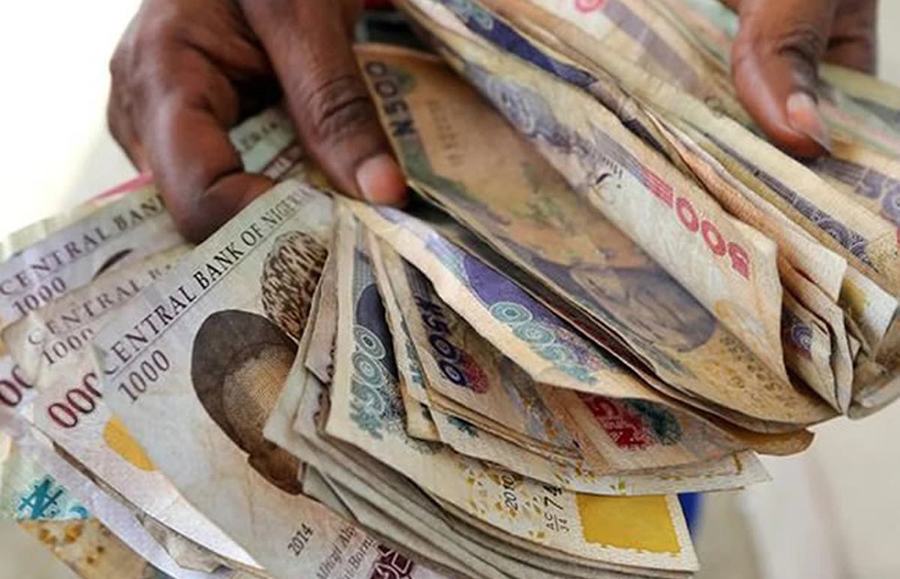It is no longer news that the plunging oil prices have increased pressure on the naira.
Africa’s largest economy exports mostly crude oil, but it spends its foreign earned currencies on supplies abroad for basic items such as food, wears, electronics, and refined petrol. According to Nigeria’s foreign trade report, in 2019 alone Nigeria spent about N16.959 trillion ($47 billion) on imports compared to N13.1 trillion ($36.5 billion) a year earlier. It spent about $28.7 billion on invincibles (spend on services such as professional fees, financial services, business travel, medical tourism, etc.)
This illustrates how Nigeria imports everything, since Nigeria produces less locally, thereby increasing demand for the dollar needlessly; importers need American dollars to pay for goods bought abroad, causing depreciation of Nigeria’s local currency. Though the disparity between the official rate and parallel market rates has narrowed to about 10%, the naira is still experiencing pressure from the strong dollar.
Since the start of the COVID-19 pandemic, the value of the American dollar has reached record highs, as many investors around the world are rushing to have a part of it.
(READ MORE: Naira hits N500 to $1 at the forward market)
According to the International Monetary Fund, the American dollar is still the most popular currency. As at Q4 of 2019, it made up about 60% of all known central banks’ foreign exchange reserves.
In a phone chat with Nairametrics, Philip Anegbe, Team Lead CardinalStone Research explained in detail the strains being faced by the naira. He said:
“The case for further Naira re-pricing is strong. Nigeria is facing a twin deficit crisis across its fiscal and current account books and these deficits are likely to get wider with the weak oil price and production.
“The sad part is that we are not seeing enough inflows via the financial accounts that can help bridge the gap in the current account of the balance of payment.”
(READ MORE: Naira crashes to N450 to $1 at parallel market amid fx scarcity)
He went on to discuss the challenges Nigeria will face in getting loans to balance its economy. He continued by saying:
“Nigeria is looking to obtain over $6 billion in funding from World Bank, AFDB, and IMF as well as debt services relief on previous foreign debt.
“We believe the government is unlikely to obtain all the foreign borrowing it needs to plug the deficit.
“Via the IMF’s RFI (Rapid Financing Initiative), there is a chance Nigeria may be unable to draw down 100% of its target $3.4 billion. Other African nations that have traveled this route were able to draw down around 50% as well. So, we prefer to keep a cautious stand on this front.
“If the needed amount of inflows is not obtained via external borrowings, FPI flows, or FDIs (there is significantly little chance of getting material FPIs or FDIs because of the weaker macros and oil prices), the CBN could result to significant drawdown on reserves and may eventually bow to a devaluation when it runs out of armory to defend the Naira.”
(READ MORE: Many odds against the naira)
Furthermore, a look at the Nigerian industrial sector shows that higher import costs, coupled with a fall in the foreign exchange reserves standing at about $33.9 billion as of 23rd April 2020, are increasing local production costs, spurring domestic inflation thereby depreciating the naira.
Victoria Njimanze, an investment analyst at a leading investment bank explained in details why the dollar is having a stronghold on the naira, she said:
“Currently, more than 60% of foreign bank reserves are denominated in U.S dollars. It is also tagged as a haven currency as it is perceived to be less risky compared to holding local currencies (which during crises experience capital outflows) and often appreciates in a period of economic downturn. Because it is considered a haven during times of global economic uncertainty, the demand for dollars can often persist despite fluctuations in the performance of the U.S. economy, hence we see investors take shelter in the U.S. currency, given the current blow dealt on world economies by the COVID-19 pandemic.”
(READ MORE: Naira depreciates further against dollar, pounds sterling over liquidity crisis)
She emphasized on how investors are trooping into the US dollar saying
“Given the trend in the oil market, the US (United States.) dollar rose against a basket of major currencies amid the sharp drop in oil prices, as investors move to haven assets. As lockdown continues and factories stay closed with travel restrictions, oil prices continue to dive lower due to low demand, it draws money from risk assets to the safety of the US dollar and its denominated assets.
“We, therefore, expect to see the voracious demand for dollar soaring on the back of current turbulence in the market as investors continue to stay risk-averse. All current happenings should be negative for the US dollar, but it may be worse for the rest of the world as there is no global recovery without a US recovery.
“In conclusion, the greenback will continue to draw its strength from risk aversion.”
